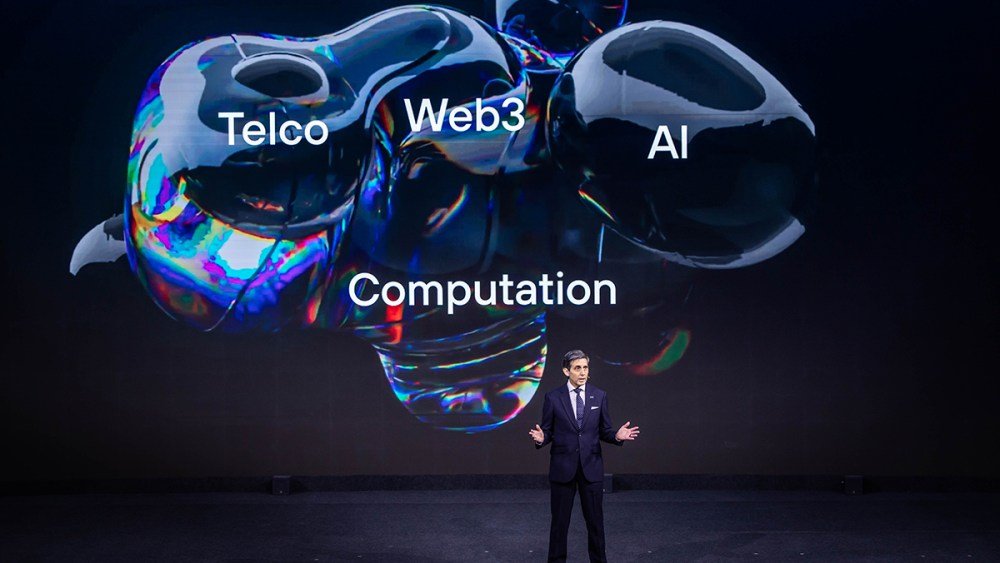In “Cable Girls,” Netflix’s first Spanish original, Alba, wrongfully accused of murder, escapes to 1928 Madrid to work at the building which symbolized Spain’s headlong plunge into modernity: the just- built, Telefónica Building, then Europe’s tallest skyscraper.
Some 100 years after its 1924 launch, Telefónica, one of Europe’s four largest telephony providers, has reopened the doors of the neo-Baroque building having restored its recessed panel ceilings, the original floors, railings and atrium clock, adding, however, a LED display cubicle, teleconferencing and a vidgame space.
In other ways, Telefonica is plowing into new forms of modernity. It’s rolling out broadband 5G and implementing AI and GenAI applications. It’s also using app-to-network interfaces, such as Open Gateway, which connects developers and operators representing 65% of the world’s mobile phone connections.
At Barcelona’s Mobile World Congress in February, where leveraging AI and GenAI was heavily talked about, Telefónica helped lead the charge, with its executive chairman-CEO José María Álvarez-Pallete proclaiming in a welcome keynote titled “The Art of What’s Possible” that we are in the midst of a “massive revolution” driven by the confluence of computing, telco, AI and Web3.
Telefónica’s innovation can be directly relevant to the media sector — it owns Spanish pay TV and SVOD operator Movistar Plus+, Europe’s largest film and TV investor among telcos. But it will play out over a far wider scale. The focus at Barcelona’s Mobile World Congress was largely on gaining cost efficiencies in mobile operators complex systems, observes James Barford of London-based research company Enders Analysis.
But such is the breadth of Open Gateway — its 47 operators include AT&T, British Telecom, Orange, T-Mobile and Verizon — that AI solutions can affect many walks of life. Unmanned Life, a Telefónica-backed robotics and drone company powered by 5G and AI, for example, is developing an API to provide guaranteed best video streaming services on demand for police, which could be used at 80,000-seat stadiums even if normal networks are saturated by people using their mobile phones.
Meanwhile, Telefónica is battling with headwinds faced by the whole of Europe’s telecom sector. Capital investment needed for 5G and fiber networks has meant cash flow, the sign of a healthy company, has come under “massive pressure,” Alex Evans, head of TMT EMEA Barclays, said at June’s Media and Telecoms 2024 Conference in London.
At the MWC, Telefónica’s Álvarez-Pallete and top execs at Deutsche Telekom, Orange and Vodafone shared a stage to rail against E.U. regulations, which tend to approve new market entrants to keep competition high. This, they stated, favored bitter competition, ensuring low retail prices in preference to consolidation, which would allow telecoms to invest all the more in the AI opportunities offered by their 5G networks.
Help for Telefónica may have come, however, from an unexpected source. Last year, Saudi Arabian telecoms group STC announced it had bought 4.9% of Telefónica, signaling its intention to raise that stake to 10%. The Spanish government’s reaction has been to take 10% of Telefónica. CriteriaCaixa, part of Caixa, Spain’s second biggest bank, has raised its own participation to 9.9%.
On Dec. 20, when Spain’s government announced its stake, Telefónica’s share price jumped 10%. Sepi, Spain’s governmental holding company, said its planned stake would help Telefónica to “achieve its objectives and will contribute to safeguarding its strategic capabilities.” Since December, Telefónica shares have appreciated 16%.
Could Movistar Plus have aided this backing? It had series selected for both the Venice festival and San Sebastian — Rodrigo Sorogoyen’s “The New Years” for the former and Alauda Ruiz de Azúa’s “Querer” and Diego San José’s “Celeste” for the latter. It is also producing a new generation of “auteur event” movies from Spain’s greatest youngish directors.
The Spanish government’s main concern with Telefónica is its defense and security businesses. But these titles help drive Spain’s cultural conversation.
